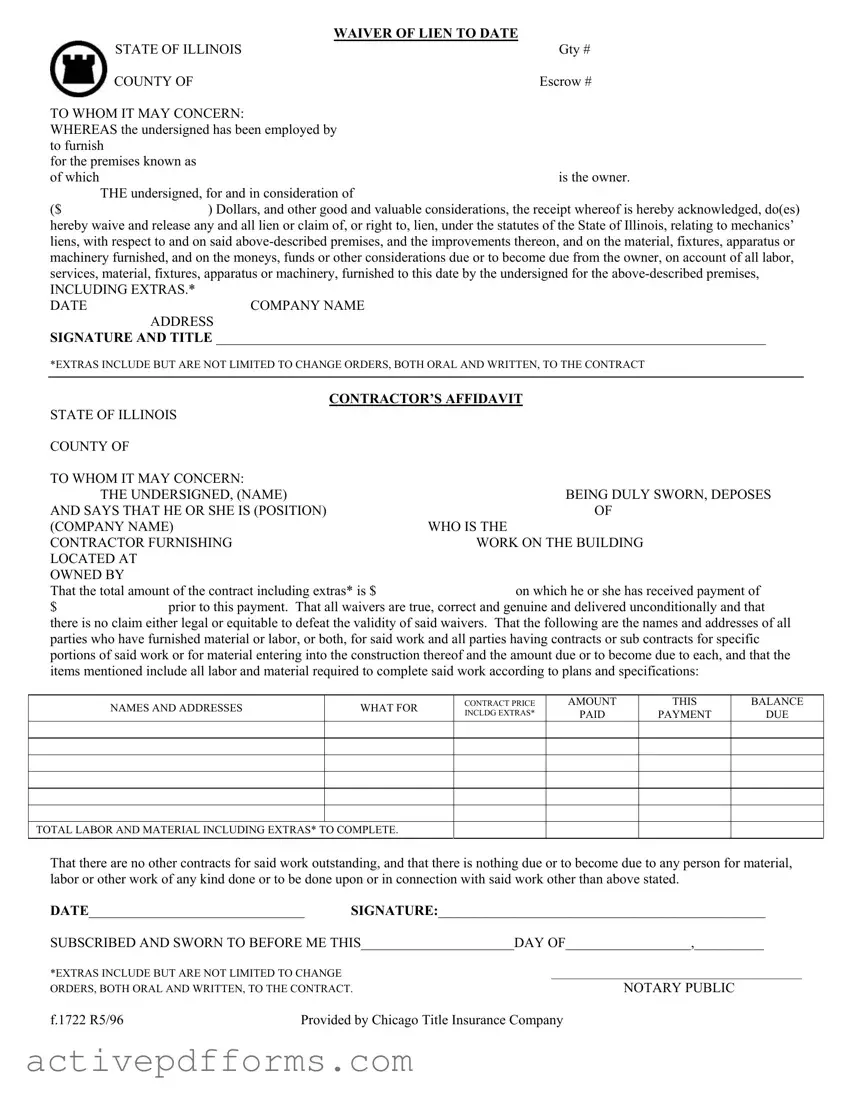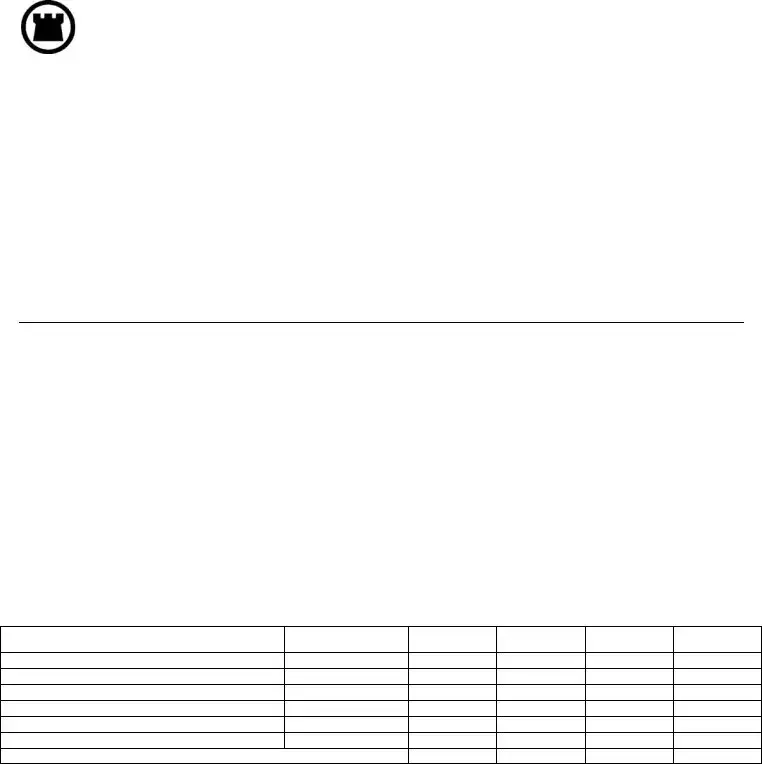- What is a Chicago Title Waiver Format form?
The Chicago Title Waiver Format form is a legal document used in the state of Illinois that contractors can use to waive and release any lien or claim rights to a lien. This waiver pertains to the labor, services, materials, fixtures, apparatus, or machinery they have provided up to a certain date. It's a formal acknowledgment that they have been compensated and relinquish future claims to the property.
- Why would someone need to use this form?
This form is necessary whenever a construction project is undertaken, and a contractor or subcontractor has been employed to work on a building. It protects property owners from any future liens against their property for the work and materials provided, ensuring that once paid, the contractor cannot claim additional money for the work initially agreed upon and completed up to the date specified in the waiver.
- Does this form include extras or change orders?
Yes, the Chicago Title Waiver Format form explicitly includes extras, encompassing but not limited to both oral and written change orders to the contract. This inclusion ensures that all additional work or materials requested outside of the original contract are also waived from future liens, provided they are covered by the payments received.
- What information is required to complete this form?
Completing this form requires several details including: the contractor's company name, the total amount of the contract (including extras), the amount received prior to the waiver, a list of all parties involved along with the material or labor provided, the contract prices including extras, and the balance due. It also includes identifying information about the building and its owner, and dates relevant to the services provided and the waiver.
- Who needs to sign the Chicago Title Waiver Format form?
The form must be signed by an authorized representative of the contractor's company, typically someone in a position of responsibility such as an owner or executive officer. Additionally, the form must be notarized, which means that it also needs to be signed in the presence of a Notary Public who verifies the identity of the signer.
- How does one ensure the waiver is valid and enforceable?
For the waiver to be valid and enforceable, it must be filled out accurately and completely, signed by an authorized representative of the contractor, and notarized. The waiver states that all information provided is true, correct, and genuine and that the waivers are delivered unconditionally, meaning there can be no conflicts or claims that could defeat the validity of the waivers.
- What is the difference between this form and a lien itself?
A lien is a legal claim or right against a property, typically used by contractors as security for payment for work done. In contrast, the Chicago Title Waiver Format form is used to release the property from such claims once payment has been received, essentially clearing the property of any debts related to the construction work covered by the waiver.
- Can this waiver be used for residential and commercial properties?
Yes, the Chicago Title Waiver Format form is applicable for both residential and commercial properties in Illinois. It is a versatile document that can be adapted to the specific needs of any construction project within the state, covering all types of properties.
- Is there any way to invalidate the waiver once it has been signed and notarized?
Once the waiver has been signed and notarized, it is considered a legally binding document. Invalidating the waiver would require proving in court that the waiver was signed under duress, fraud, or any other condition that undermines the legality of the contractual agreement. Such cases are rare and usually require significant evidence to prove.

